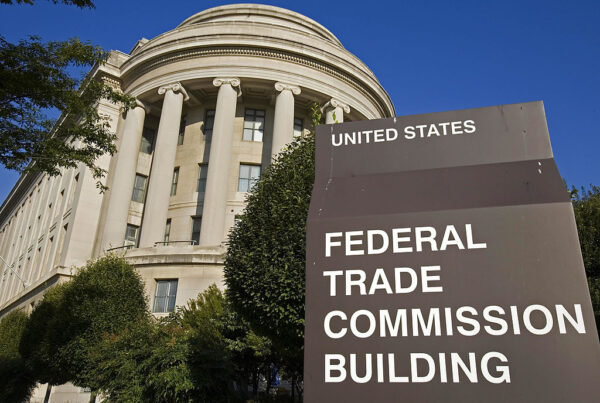
Sanofi is walking away from a deal to license an experimental Maze Therapeutics drug for a rare enzyme deficiency after the Federal Trade Commission challenged the transaction as anti-competitive.
The French pharmaceutical giant already markets Lumizyme and Nexviazyme for the disorder, called Pompe disease. Until this year, they were the only available Pompe treatments. In an administrative complaint filed Monday, the anti-trust regulator said Sanofi’s deal for Maze’s drug candidate amounts to a large company trying to eliminate a smaller competitor.

With the Rise of AI, What IP Disputes in Healthcare Are Likely to Emerge?
Munck Wilson Mandala Partner Greg Howison shared his perspective on some of the legal ramifications around AI, IP, connected devices and the data they generate, in response to emailed questions.
Both Sanofi and Maze disagree with the FTC’s position. South San Francisco-based Maze said it is reviewing its legal and business options. Sanofi isn’t waiting. The pharma giant said the FTC action will be a delay and it concluded contesting it would not be in the best interest of patients. Consequently, Sanofi will terminate the licensing agreement.
Pompe is caused by mutations to the gene that codes for acid alpha glucosidase (GAA), an enzyme needed for breaking down glycogen in muscles. As a result, glycogen, a form of glucose, accumulates in skeletal, lung, and cardiac muscle tissue. Glycogen buildup leads to progressively worsening muscle weakness and respiratory problems that become fatal.
Like many inherited enzyme deficiencies, treatment for Pompe is enzyme replacement therapy. Sanofi’s Lumizyme (marketed in Europe as Myozyme) was the first Pompe product, offering patients an engineered version of GAA. The annual cost of treatment is more than $750,000. Sanofi’s Nexviazyme (Nexviadyme in Europe) is also an engineered version of GAA, but designed in a way to improve the enzyme’s ability to clear glycogen. Nexviazyme was approved by the FDA in 2021 and by the European Commission last year.
Maze drug candidate MZE001 takes a different approach to Pompe. Rather than replacing GAA, the Maze drug aims to impede glycogen production. MZE001 blocks glycogen synthase, an enzyme important in making glycogen. The drug is a small molecule that would be less expensive to manufacture than Sanofi’s engineered enzymes. It’s also formulated as a twice-daily pill that is much more convenient for patients than receiving regular infusions.
When the licensing agreement for MZE001 was announced in May—$150 million up front and up to $600 million in milestone payments—Maze had encouraging Phase 1 data showing the drug was well tolerated and it also led to reductions in glycogen levels across all of the tested doses. Both Sanofi and Maze said the deal placed the small molecules in the hands of a global company with the resources and Pompe experience to advance its development. The FTC disagrees.
“This is a case about a monopolist seeking to eliminate a nascent threat to its monopoly,” the agency said in the complaint.
Many key details of the 17-page complaint are redacted, but the publicly viewable portions portray a pharmaceutical giant concluding its own products would not be competitive with the oral dose formulation of the Maze drug candidate. They also suggest that the licensing agreement was intended to keep the molecule from getting in the hands of rival pharma companies. The complaint goes on to state that by eliminating the competitive threat of MZE001, the deal contributes to Sanofi’s monopoly in Pompe, violating the anti-monopoly provisions of Section 2 of the Sherman Act.
Revenue for the Sanofi Pompe franchise increased 7.3% year over year topping €1 billion in 2022, according to the company’s annual report. Sanofi attributes that growth to Nexviazyme’s launch in U.S., Europe, and Japan. However, 2022 sales of Lumizyme/Myozyme are down from the prior year due to eligible Pompe patients switching to Nexviazyme.
Pompe patients do have a new treatment option available from Amicus Therapeutics. In September, the FDA approved Amicus’s Pombiliti, an engineered version of GAA. That therapy is taken with Opfolda, a small molecule that Amicus designed to improves muscle cell uptake of Pombiliti. But the new Amicus products are not direct competitors to Sanofi’s Pompe therapies. The FDA’s approval of the combination therapy covers the treatment of Pompe patients who are not improving with the Sanofi therapies. The FTC complaint notes that Amicus’s therapy currently has little to no market share, posing little price competition to the Sanofi products.
“Because Amicus Therapeutics’ two-component [enzyme replacement therapy] was only approved as a second-line therapy (for patients not improving on Sanofi’s therapies), Sanofi has little to no incentive to decrease its list prices or offer significant discounts or rebates on Lumizyme and Nexviazyme, which remain the only FDA-approved treatments for newly diagnosed patients starting treatment for Pompe disease,” the FTC said.
The regulator set a May 15, 2024 date for an evidentiary hearing—a little more than one year after Sanofi and Maze announced the licensing agreement. Sanofi’s assertion that protracted litigation will not help Pompe patients has some merit. The Maze molecule has been ready for Phase 2 testing and further clinical development is in limbo as long as the case is ongoing.
With Sanofi bowing out of development of MZE001, privately held Maze will need to figure out how to finance development of that molecule and others in its pipeline. The initial deal called for Sanofi to pay Maze $130 million up front and make a $20 million equity investment in the biotech when it completes an initial public offering, the FTC complaint revealed. Regardless of whether Sanofi invests in Maze or not, the market remains mostly closed for biotech IPOs.
Photo: Getty Images














